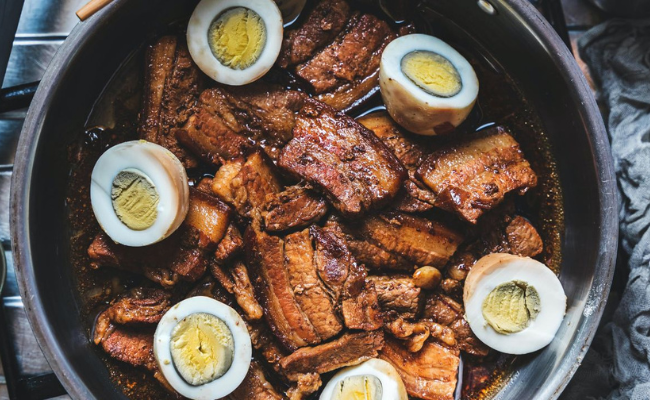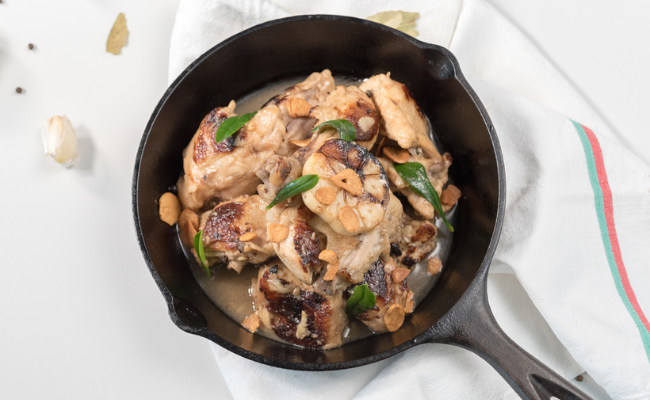Adobo 101: Everything we need to know about the popular Filipino dish

Filipino adobo is slowly taking over plates all over the world. What is it and how do we make it? | Photo by Eiliv Aceron/Pexels
From simply being a staple ulam at home to being the subject of influencer and celebrity cooking videos, adobo has steadily been gaining global prominence. Of course, this isn’t surprising given how delicious this dish is.
But with fame comes its fair share of “controversy.” In Filipino adobo’s case, the perennial debate on how to properly cook it and which version is most legit.
The answer is, well, almost all of it. Each household in the Philippines makes its own version of adobo that promises to be “the best,” so there’s simply no other way than to just try them all.
You may also like: Uncle Roger avenges adobo by making his own after Rachael Ray blunder
Origins of Filipino adobo
First thing’s first though: What exactly is adobo?
Adobo has apparently been a native dish even before the Spaniards arrived in the country. Historian Ambeth Ocampo, in his Inquirer column, wrote, “Adobo was in the Philippines before the Spanish conquest. Unfortunately, adobo’s native name was not recorded, leaving us with a dish described with the Spanish verb adobar: ‘to marinate, pickle, or cure with vinegar.’ Adobo is technically not the name of a dish; it is a process, a way of cooking. Adobo is a Philippine dish, not a Spanish one.”

Adobo is uniquely Filipino | Photo courtesy of Nolisoli.ph
So yes, like most Filipino dishes, it was named by the Spaniards. But it’s just good to know too that the way we cook adobo—Spanish though it may be named—is uniquely ours.
Filipino-American food and travel writer and recipe developer Amelia Rampe, in an article for Food & Wine, differentiates the adobo in Spain, Mexico, and other Hispanic regions from ours by saying that theirs is a marinade or even spice blend at best, while ours is more a stew.
Regional adobo
As you can probably tell by now—whether by constant reading about the subject or by tasting your way through various Filipino families’ versions of adobo—anything can be used to make adobo. You can make adobo as long as you stick to the base of vinegar, garlic, pepper, and bay leaves (even soy sauce is optional for some regions).
“Adobo was in the Philippines before the Spanish conquest. Unfortunately, adobo’s native name was not recorded, leaving us with a dish described with the Spanish verb adobar.” -Ambeth Ocampo, ‘Much ado over adobo’ published in the Philippine Daily Inquirer
There’s the classic pork adobo and chicken adobo, but there’s also adobo made with seafood like squid (pusit), and vegetables like sitaw, kangkong, or eggplant. You can even adobo peanuts.
Generally, regions have their own way of cooking adobo, too. And how your family cooks may also depend on where they’re from in the Philippines.
The typical adobo uses soy sauce and vinegar, while adobong puti skips the soy sauce. In Bicol, adobo sa gata, which is cooked with coconut milk, is widespread. Meanwhile, in Iloilo, they have adobong pula, a reddish version of the dish colored by adding atsuete (annatto). Then there’s also adobong dilaw popular in Batangas, which gets its color from turmeric.
Whichever way you make it, you can take comfort in the fact that there’s a Filipino family out there who’s bound to make it close to yours (if not better, as they would probably claim).
And it doesn’t spoil quickly, too. What a great bonus.

